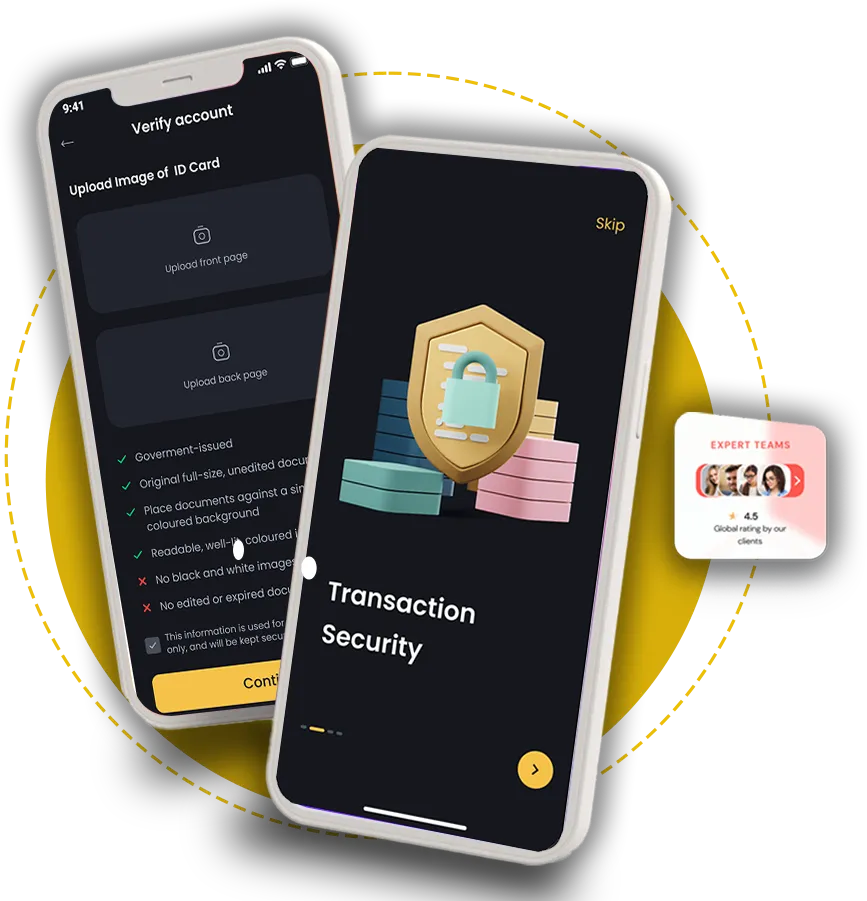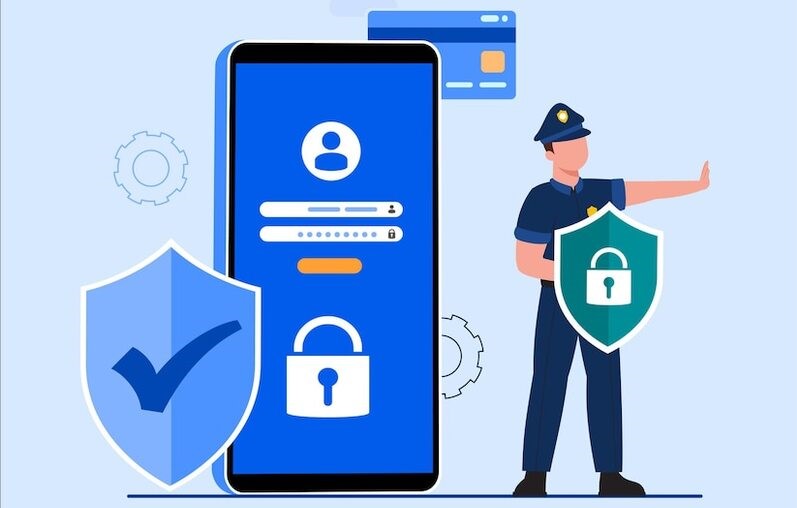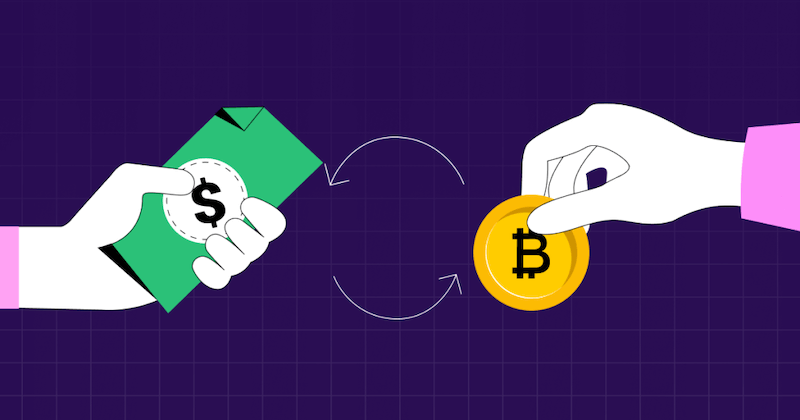How to Secure Your Crypto Wallet: Expert Tips For Ironclad Protection
Your digital coins are like treasure, and pirates are always lurking. Think fast—how safe is your stash right now? You’ve heard horror stories: hackers draining wallets, leaving nothing behind. It’s a wild web out there, but fear not! I’ll show you how to secure your crypto wallet with steps even a kid could follow. We’ll dive into wallet encryption, crucial safeguards, and beyond. Ensuring your crypto’s safe means sleeping easy. Let’s lock it down together, starting with the basics and moving on to pro-level moves.
How to secure your crypto wallet: Understanding Crypto Wallet Security Basics
The Importance of Wallet Encryption Techniques
Think of a crypto wallet like a bank vault. It holds your money. But it’s not about thick steel doors here. It’s about smart locks, which are wallet encryption techniques. These locks guard your wallet with secret codes. Not just any code, but codes tailored just for you.
Encryption turns your wallet data into a secret code. And without the right key, no one can crack it. Here’s the thing: the better the encryption, the safer your coins. Wallet encryption techniques are your first line of defense.

When you secure your crypto wallet, you’re making sure only you can get in. You need to pick a wallet that offers strong encryption. This way, no hacker can just stroll in and take your cash.
Some wallets scramble your info better than others. Make sure yours is top-notch. Think of it like a secret language. If the bad guys can’t speak your wallet’s language, they can’t steal your money.
Key Components of Cryptocurrency Protection
Let’s dig deeper into keeping your digital coins safe. Imagine a castle. Now, how do we protect the castle? First, we have the moat, which is multi-factor authentication. This means asking for more than one proof that it’s really you trying to get in. Maybe it’s a password plus a code sent to your phone.
Then there are the guards, which are your private key safety and recovery seed security. Your private key is like the master key to your castle. Keep it secret; keep it safe. Write it down or store it somewhere only you can access. Then there’s the recovery seed. This is a backup key. Like a spare key to your house, it’s crucial, but you must hide it well.
We also have the watchtowers, which are the hardware wallet protection and cold storage wallets. These are like special vaults not connected to the internet. They’re super safe because hackers can’t touch them online.
Lastly, picture a drawbridge. This is where you manage risks to your crypto wallet. Always be aware of the risks. Keeping your digital coins safe means knowing what’s out there.
Watch out for some big dangers. These include sharing your secret keys or using sketchy platforms. Also, don’t forget to keep everything up to date. Outdated software is like a broken castle gate waiting to be knocked down.
Remember, you are the king or queen of your crypto castle. It’s on you to protect it. And with strong wallet encryption and smart safety steps, your digital treasure stays safe and sound.
Implementing Strong Access Controls
Setting up Multi-factor Authentication
Secure your crypto wallet with a strong lock. Imagine your wallet like a fort. It needs more than a key to get in. Multi-factor authentication (MFA) makes it tougher for thieves. You combine something you know, like a password, with something you have, like your phone, or something you are, like your fingerprint. It’s like having a series of doors; each one needs a different key. Most wallet apps let you turn on MFA. Use it to keep your digital coins safe. It adds an extra step, but it’s worth it. Your peace of mind matters.
Multi-factor authentication is vital. Without it, if someone gets your password, they can easily swipe your crypto. With MFA, even if they have your password, they’re missing a piece of the puzzle. That second factor is a wall they often can’t climb. Remember to keep all your MFA methods secure. If you use your phone, make sure it has a passcode. If you use email, protect your account with its own MFA. Every layer adds to your wallet’s safety.
The Role of Private Key Safety and Recovery Seed Security
Your private key is the master key to your crypto fort. It’s a string of letters and numbers that unlocks your wallet. Never share it. Keep it secret, keep it safe. Write it down on paper and store it where only you can find it. If it’s in your computer or online, hackers might find it.
Recovery seed security is like a backup for your backup. It’s a phrase that helps you get back into your wallet if you ever get locked out. Like your private key, write it down and hide it well. Don’t store it on your computer or phone. Think of it as your wallet’s safety net.
Both your private key and your recovery seed are too important to leave out in the open. They are the keys to your cryptocurrency protection. If someone gets them, they get your crypto. It’s that simple. Keeping them safe can be as easy as locking them in a safe or hiding them in a secret spot you’ll remember.
Think about using cold storage wallets or hardware wallet protection for an extra layer of safety. These let you store your keys offline, away from hackers. Picture it as a treasure chest buried on a deserted island, far from thieves. Remember, if you lose your private key or recovery seed, even you can’t get into your wallet. So back them up and treat them like the most valuable things you own.
Securing your crypto wallet is like gearing up for battle. You never know when a threat will appear, but you’re always ready. Stay sharp, stay safe, and let’s keep your digital currency secure together.
Safeguarding Against External Threats
Defending Against Phishing Attacks and Malware
Phishing and malware are big risks to your crypto wallet. Here’s how to stay safe. For phishing, always check who sent the email or message. If it looks fishy, it’s a no-go. Don’t click any strange links. These could be traps to steal your wallet info. Stick to official sources for all your crypto needs. For malware, keep your devices up to date. Use anti-virus software that you trust. It should scan and block bad programs from getting in. Be careful with downloads. Only get files and apps from well-known places. This lowers the chances of malware sneaking onto your computer or phone. It’s like having a guard that stops thieves at the door.
Using VPNs for Secure Crypto Transactions
When you do things with crypto, it must be on a secure network. Public Wi-Fi can be a hazard. Hackers wait to steal your details. Use a VPN to keep your online actions hidden. It shields your data as it travels the internet. It’s like sending your crypto under a magic cloak. Nobody can see it. You find a VPN you like and turn it on before any crypto work. This makes sure your digital coins and wallet are safer. It’s important to use a VPN that’s well-known and has good reviews. They’re like secret tunnels made just for your crypto to move without risk.
Remember, keeping your digital currency safe is not hard. You just need good habits. Watch out for phishing. Use good software to stop malware. And always use a VPN when online with your crypto. This way, your crypto stays only with you.
Maintaining and Enhancing Wallet Security
Regular Wallet Updating and Maintenance
Keep your crypto wallet safe; always update it. Software updates fix security holes. They stop hackers from stealing your digital coins. Even the best wallets need updates. Check for updates often. It’s just like keeping your phone’s apps fresh.

Here’s how to update a wallet:
- Visit the wallet’s official site.
- Download the latest version.
- Follow the site’s update guide carefully.
- Restart the wallet after updating.
Don’t forget, backups are key before updating. If something goes wrong, you won’t lose your funds. Each step is simple yet vital for securing your crypto wallet.
Regular maintenance is not hard. It means you:
- Look for updates monthly.
- Delete unnecessary files or old backups from your wallet.
- Review wallet transactions to spot any unfamiliar activity.
Best Practices for Backing Up Wallet Data
A backup saves your crypto if your wallet is lost or breaks. Here are steps to do it right:
- Use a USB drive, or write down your recovery seed on paper.
- Store it in a safe place, like a locked box or a bank’s safety deposit box.
- Keep multiple backups in different locations for extra safety.
- Test your backup regularly to make sure it works.
Remember, a recovery seed is a way to get your wallet back. It’s a set of words. Never share these with anyone. They’re the key to your crypto riches.
Backup tips:
- Don’t keep your backup online where hackers can find it.
- Use locked safes for your recovery seed and USB drives.
- Tell someone you trust where your backups are, just in case anything happens to you.
These steps are simple, but they are powerful in securing your crypto wallet. Don’t skip them. Your peace of mind is worth it.
In this post, we dug into ways to keep your crypto wallet safe. We started by learning how wallet encryption keeps your money secure. Key safety steps are a big part of this too. Next, we talked about access controls. Using many steps to check who you are, like multi-factor authentication, helps a lot. Keeping your private key and recovery seed safe is also crucial.
We also covered how to fight off hackers and bad software. Don’t fall for fake emails! A VPN can help hide your info when you do crypto stuff online. Finally, we discussed how to stay on top of wallet security. This means regular updates and smart ways to back up your wallet data.
To wrap up, every step we covered is important to protect your digital cash. Always be on guard, update often, and stay smart about security. Do these, and you’re on track for keeping your crypto safe! Follow Crypto Currency Bitcoin Price to update more knowledge about Crypto.
Q&A :
What are the key steps to secure your crypto wallet?
Securing your cryptocurrency wallet is essential to prevent unauthorized access and potential loss of your digital assets. To safeguard your crypto wallet, follow these steps:
- Use a hardware or cold wallet for increased security.
- Regularly update your wallet software.
- Enable two-factor authentication (2FA).
- Use a strong, unique password.
- Regularly backup your wallet and store backups in different locations.
- Avoid sharing sensitive wallet information.
Remember, the security of your crypto wallet depends largely on the precautions you take.
Are crypto wallets safe?
While cryptocurrency wallets are generally secure, their safety often relies on user practices. By following essential security protocols, such as using a strong password, enabling two-factor authentication, keeping software updated, and backing up wallet data, users can maximize their wallets’ security. Selecting a reputable wallet provider with strong security measures can also enhance safety.
What are the risks associated with crypto wallets?
Crypto wallets, like any other digital platform, come with certain risks.
- Unauthorized access: If someone gets hold of your wallet access keys or password, they can steal your funds.
- Phishing attacks: Crypto users may fall victim to scams or phishing attacks.
- Loss of access: If you forget your private keys or password, you might lose access to your crypto assets.
- Software/hardware failures: If the wallet software or hardware malfunctions, you can lose your cryptocurrency.
However, the majority of these risks can be minimized with proper security measures.
How do I recover my lost crypto wallet?
Recovery of a lost crypto wallet depends on the type of wallet and the loss scenario. If you’ve forgotten your wallet password, wallets usually have password recovery options. If you’ve lost a hardware wallet, recovery can be completed using a backup seed phrase. However, if you’ve lost your secret keys with no backup, recovery may not be possible. In all cases, contacting your wallet provider should be the first step.
What is the most secure crypto wallet?
Wallet security varies based on type and usage, but hardware wallets, like Ledger and Trezor, are commonly regarded as some of the most secure options. These wallets store user keys offline, reducing the risk of cyber-attacks. That being said, no wallet is 100% secure. To maximize wallet security, users must follow best practices such as keeping software updated, creating strong passwords, and utilizing two-factor authentication.

